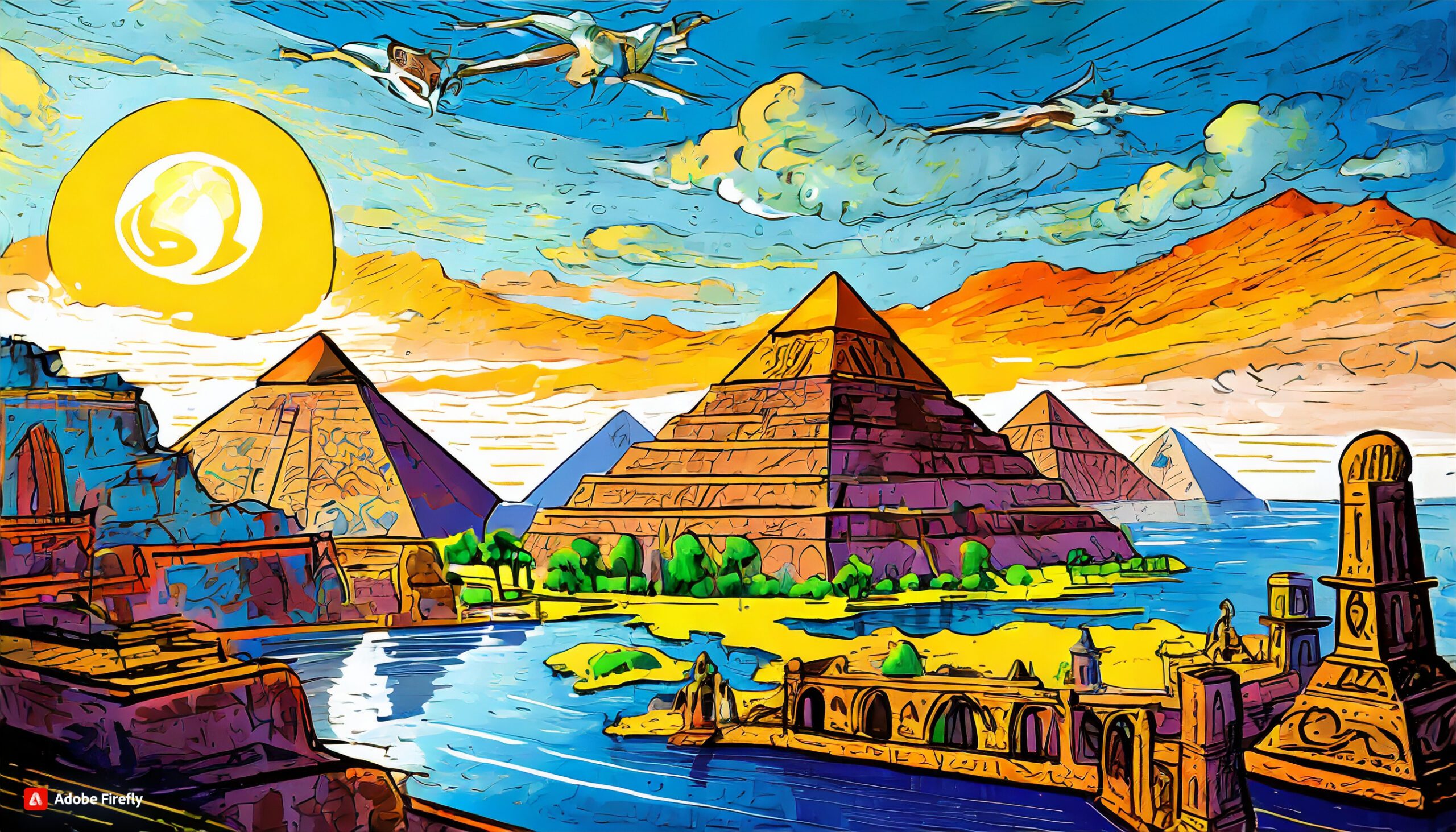Introduction
The 8th century was a remarkable period in human history, marked by a myriad of stunning events that shaped the course of civilizations worldwide. From the rise of the Carolingian Dynasty in Europe, to the spread of Islam in the Middle East and North Africa, and the zenith of the Tang Dynasty in China, this century witnessed transformative political, cultural, and religious developments. It was an era of heroic battles, epic coronations, and intellectual flourishing, juxtaposed with Viking raids and societal upheaval. In this exploration, we delve into the captivating events that unfolded during this dynamic epoch, illuminating its significance and enduring impact on the world.
The Carolingian Dynasty: Shaping Western Europe’s Middle Ages
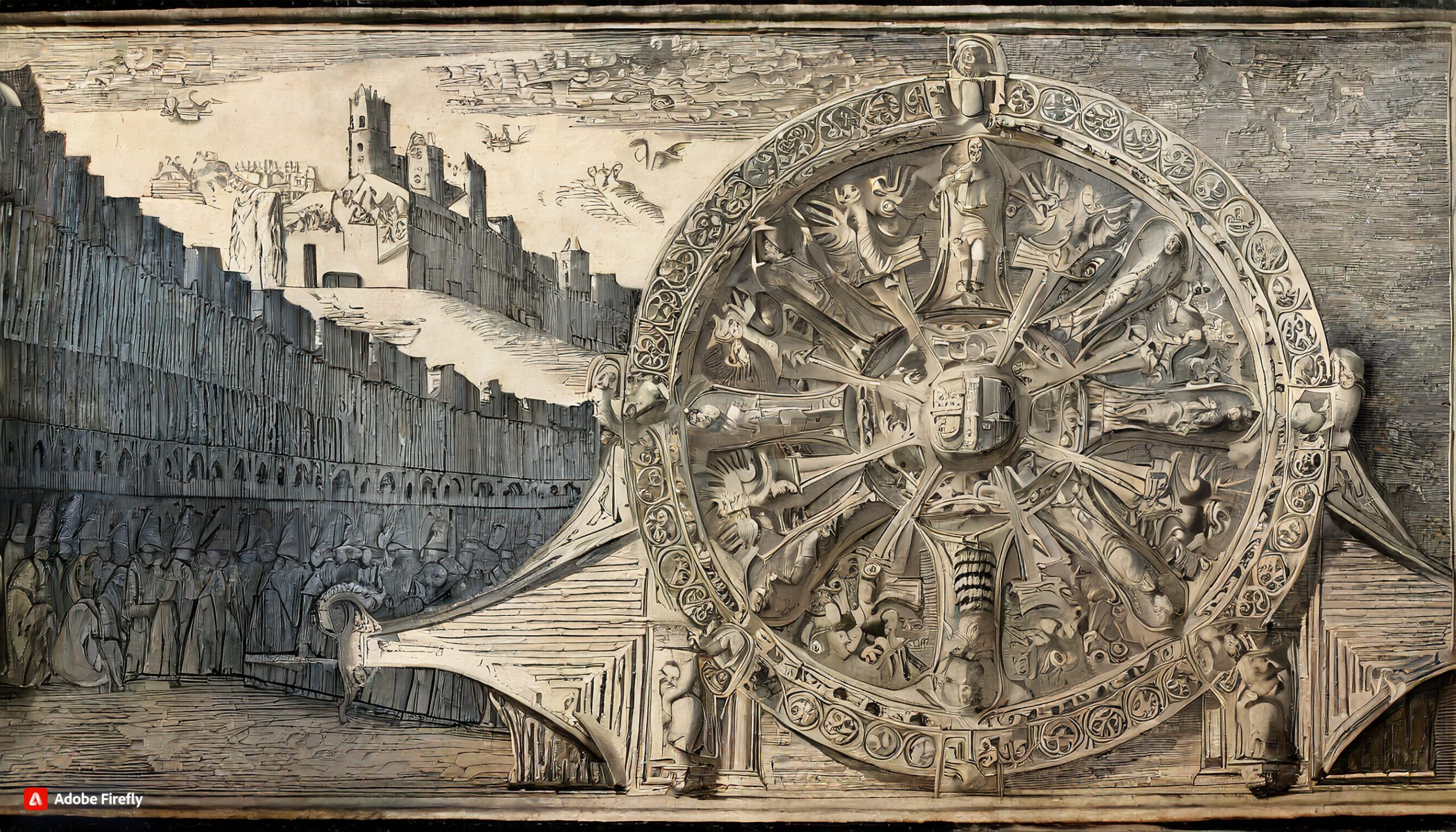
- Founding by Charles Martel: The Carolingian Dynasty was founded by Charles Martel, who is renowned for his victory at the Battle of Tours in 732 AD, which halted the advance of the Muslim Umayyad Caliphate into Western Europe. This battle is often credited with saving Europe from Islamic conquest.
- Charlemagne’s Coronation: Charlemagne, also known as Charles the Great, was a pivotal figure in the dynasty. He was crowned as the Holy Roman Emperor by Pope Leo III on Christmas Day in the year 800, reviving the concept of the Western Roman Empire and strengthening the ties between the Carolingians and the Church.
- Carolingian Renaissance: Under Charlemagne’s rule, there was a revival of learning and culture known as the Carolingian Renaissance. This period saw a resurgence of classical studies, the preservation of ancient texts, and the standardization of Latin script, which had a lasting impact on education and scholarship in Europe.
- The Carolingian Empire: At its zenith, the Carolingian Empire covered much of Western and Central Europe, including modern-day France, Germany, and parts of Italy and Spain. This vast territory made it one of the most powerful empires in medieval Europe.
- Treaty of Verdun (843 AD): After Charlemagne’s death, the Treaty of Verdun divided the Carolingian Empire into three parts, leading to the creation of the kingdoms of West Francia (France), East Francia (Germany), and Middle Francia (a region that eventually fragmented into smaller states). This division had far-reaching consequences for the future political landscape of Europe.
- Monastic Reform: The Carolingian Dynasty played a significant role in monastic reform. Charlemagne encouraged the establishment of monastic schools and the spread of Christianity. This contributed to the preservation of knowledge and culture during a tumultuous period.
- The Viking Raids: During the Carolingian era, Western Europe faced repeated Viking invasions from the north. These raids disrupted trade and led to the construction of fortified structures like castles to protect against Viking incursions.
- End of the Carolingians: The Carolingian Dynasty faced internal strife and external pressures. It eventually fragmented and gave way to the rise of regional lords and the feudal system. By the 10th century, the Carolingians lost their hold on power, marking the end of the dynasty.
- Impact on Feudalism: The Carolingian Dynasty’s decline contributed to the feudal system’s development, as local nobles gained more autonomy and power, leading to the decentralization of political authority in Western Europe.
- Historical Legacy: The Carolingian Dynasty left a profound and enduring impact on European history, from the development of feudalism to the preservation of knowledge and culture. It laid the foundations for the medieval European political and social landscape.
The Carolingian Dynasty stands as a crucial transitional period in Western European history, bridging the gap between the fall of the Western Roman Empire and the emergence of the medieval states and kingdoms that would shape the continent for centuries to come.
Establishment of the Abbasid Caliphate (750 AD)
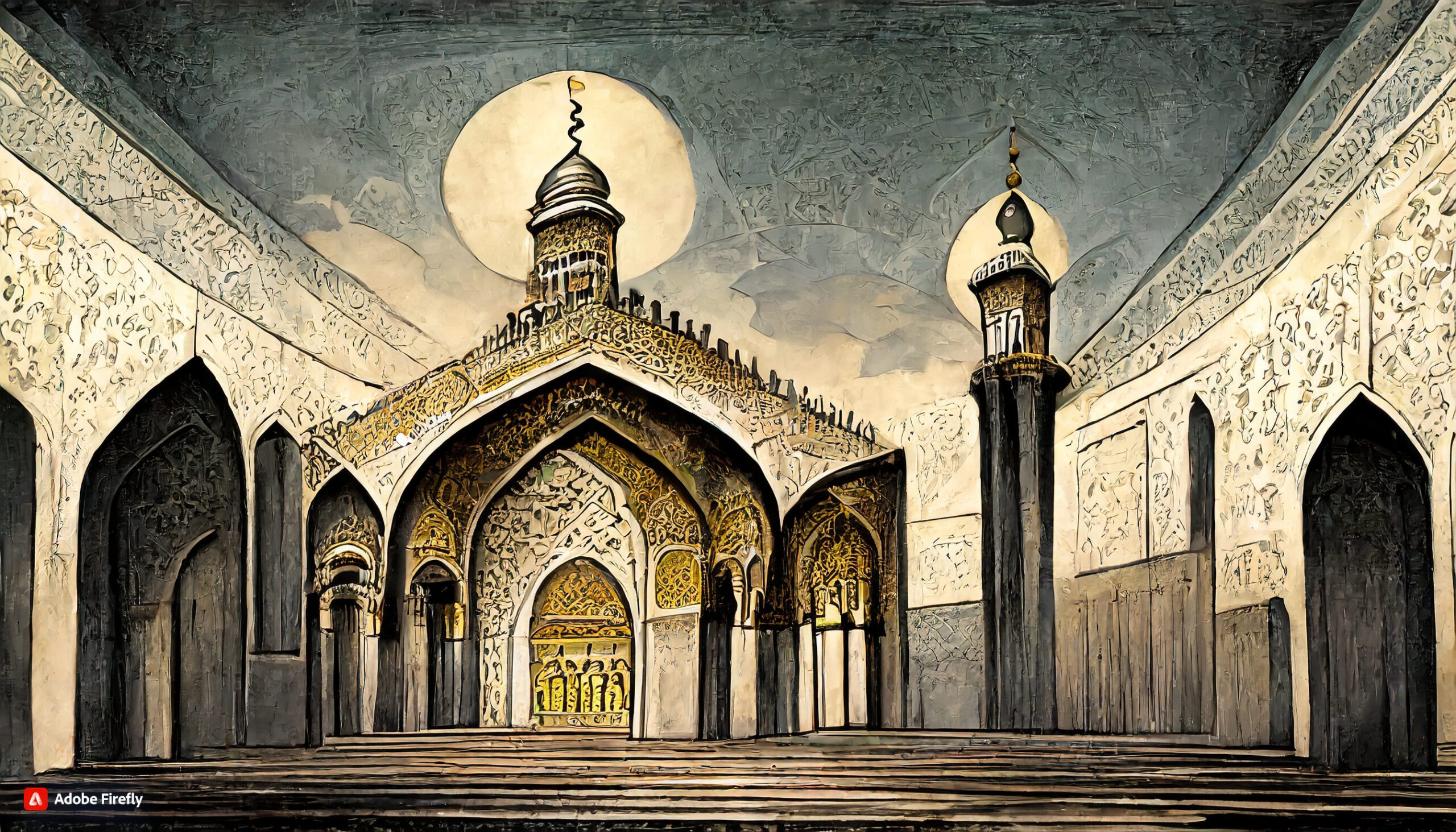

- Support from Diverse Groups: The Abbasids received support from a broad spectrum of the Muslim community. This included non-Arab converts to Islam (mawali), Persian nationalists, and various Arab dissident groups who were dissatisfied with Umayyad rule. This wide-ranging support helped the Abbasids gain the upper hand.
- Hidden Letters: During the Abbasid uprising, secret letters were sent to different regions, inciting rebellion against the Umayyads. These letters were instrumental in coordinating efforts and gaining local support.
- The Black Banners: The Abbasid forces marched under black banners during their rebellion. The color black became symbolic of their cause, and it remains significant in Islamic symbolism to this day.
- Cunning Tactics at the Battle of the Zab: The pivotal Battle of the Zab, where the Abbasids defeated the Umayyads, was marked by clever tactics. The Abbasids positioned themselves on higher ground, utilized false retreats to lure Umayyad forces into vulnerable positions, and eventually secured victory.
- Abu al-Abbas al-Saffah: Abu al-Abbas al-Saffah, the founder of the Abbasid Caliphate, was known for his clever maneuvering in securing power. He declared general amnesty, which helped to unify and pacify the newly conquered territories.
- The Shift to Baghdad: The Abbasids moved the capital from Damascus to Baghdad. This relocation played a crucial role in the city’s rise as a major center of learning and culture during the Islamic Golden Age.
- Support for Knowledge and Arts: The Abbasid Caliphate is often associated with a flourishing of arts, sciences, and philosophy. They established the House of Wisdom in Baghdad, where scholars from various backgrounds worked together to translate and preserve classical texts from Greek, Roman, Persian, and Indian traditions.
- Cultural Syncretism: Under the Abbasids, Islamic culture was significantly influenced by Persian and Hellenistic traditions. This syncretism resulted in a vibrant and cosmopolitan society that celebrated diversity.
- The Decline of the Caliphate: While the Abbasid Caliphate is celebrated for its early achievements, it eventually faced internal strife, leading to a decline in its power and influence. Regional rulers gained autonomy, and the unity of the Muslim world weakened over time.
- Enduring Influence: Despite the eventual fragmentation of the Abbasid Caliphate, its legacy endures in Islamic art, culture, and architecture, as well as its contributions to science and philosophy. The House of Wisdom’s translations, in particular, had a profound and lasting impact on human knowledge.
The establishment of the Abbasid Caliphate is a fascinating chapter in Islamic history, characterized by a mix of political maneuvering, diverse support, and a cultural renaissance that left a lasting mark on the Islamic world and beyond.
Charlemagne’s coronation as Holy Roman Emperor (800 AD)
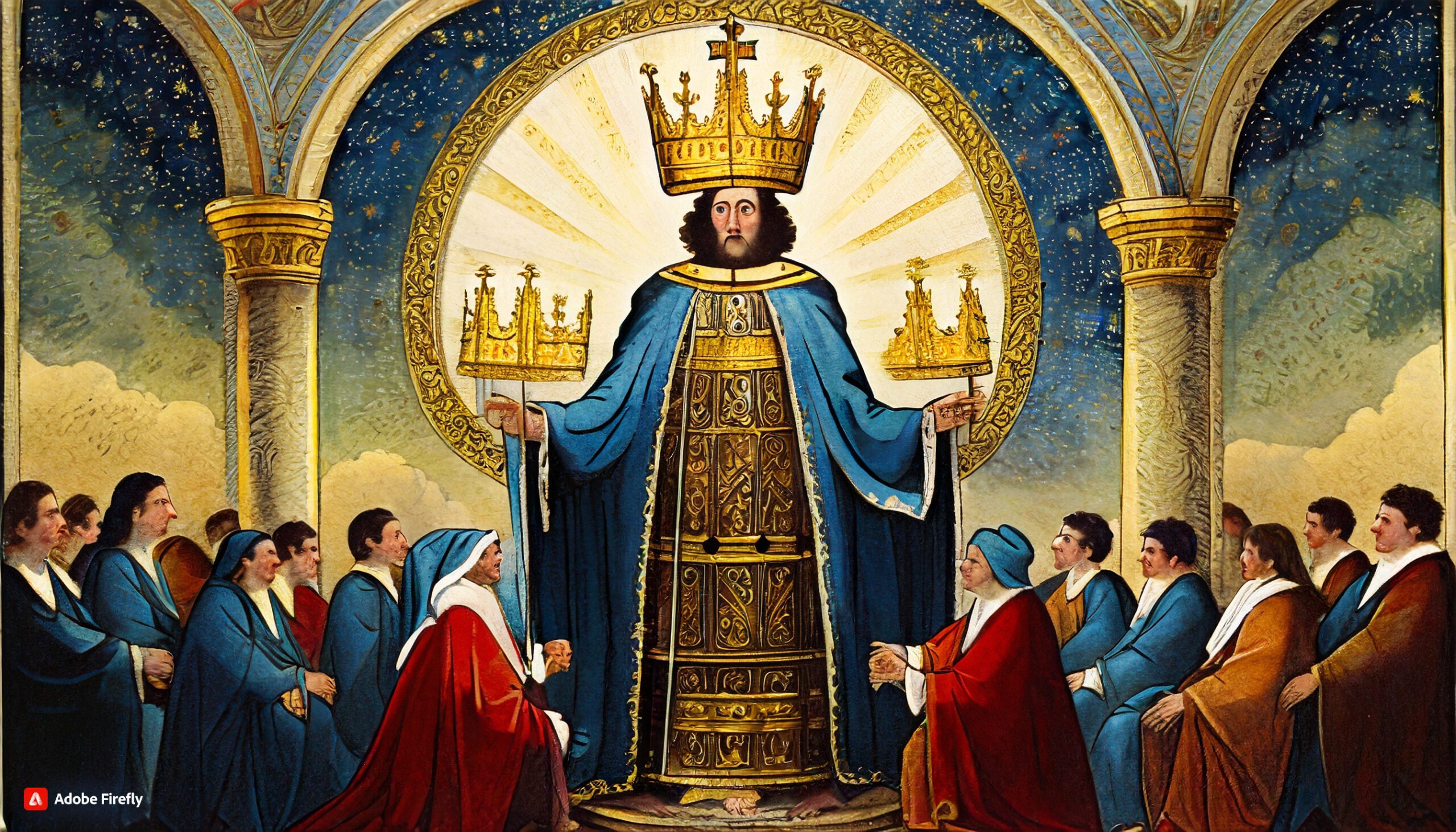

- Unplanned Coronation: Charlemagne’s coronation as Holy Roman Emperor was not a premeditated event. It occurred during a visit to Rome when Pope Leo III unexpectedly crowned him. This act symbolized the Pope’s support for Charlemagne’s role in protecting the Church and preserving the Christian faith.
- Revival of the Western Roman Empire: Charlemagne’s coronation by the Pope revived the concept of the Western Roman Empire, which had fallen over three centuries earlier. This event was seen as a direct challenge to the Byzantine Empire’s claims of being the Roman Empire’s legitimate successor.
- Charlemagne’s Reaction: Charlemagne was reportedly surprised by the coronation and later claimed he would not have entered the church had he known the Pope’s intentions. Nevertheless, he accepted the title and its implied responsibilities.
- The Carolingian Dynasty: The coronation cemented the Carolingian Dynasty’s position as a dominant force in Western Europe. The dynasty’s name itself is derived from Charlemagne (Carolus Magnus in Latin).
- Charlemagne’s Role as Protector of the Faith: The coronation enhanced Charlemagne’s role as the defender and protector of the Christian faith in the West. He was seen as a bulwark against external threats, including the Muslim Moors and the pagan Saxons.
- Charlemagne’s Reign and Centralization: As Holy Roman Emperor, Charlemagne’s reign marked a period of relative stability and centralization in Western Europe. He implemented a system of governance based on counts and missi dominici, royal envoys who oversaw local administration.
- Educational and Cultural Renaissance: Charlemagne was a patron of learning and culture, and his reign marked the Carolingian Renaissance. He promoted education, established schools, and supported the preservation and copying of classical texts, which helped to preserve knowledge during a turbulent era.
- Charlemagne’s Legacy: Charlemagne’s reign and his coronation left a profound legacy in European history. He is often regarded as the “Father of Europe” due to his role in shaping the continent’s future. His efforts to unify and strengthen Western Europe laid the foundation for later medieval and feudal structures.
- Symbolic Importance: The coronation of Charlemagne by the Pope highlighted the intertwined relationship between secular and religious authority in medieval Europe. It set a precedent for future relations between monarchs and the Church.
- Imperial Symbolism: Charlemagne’s coronation was a significant moment of imperial symbolism. It underscored the idea of a Christian empire in the West, a concept that would later evolve into the Holy Roman Empire.
Charlemagne’s coronation as Holy Roman Emperor in 800 AD is a historically rich event that bridged the gap between the classical world and the Middle Ages, shaping the future of Western Europe and the relationship between secular and religious authorities.
The Viking Age begins with their raids on European coasts


- Start of the Viking Age: The Viking Age is typically considered to have begun with the Lindisfarne raid in 793 AD when Vikings attacked the monastery on the English island of Lindisfarne. This event shocked Europe and marked the beginning of widespread Viking raids.
- Viking Origins: The term “Viking” is derived from the Old Norse word “víkingr,” which referred to a seafarer or pirate. Vikings came from the Scandinavian countries of Norway, Denmark, and Sweden.
- Longship Advantages: Vikings used longships, which were shallow, clinker-built boats with a unique design. These ships were swift, flexible, and ideal for both raiding and exploration, enabling them to navigate rivers and open seas.
- Targets of Raiding: Viking raids targeted various European regions, including England, Ireland, Scotland, France, the Low Countries, Spain, and Italy. The raids were often opportunistic and aimed at monasteries, wealthy towns, and vulnerable coastal communities.
- Monastic Wealth: Monasteries were frequent targets of Viking raids due to their wealth. The monks’ libraries and manuscripts were often destroyed or stolen, leading to significant cultural losses in some cases.
- Viking Sagas: Viking history and culture have been preserved through sagas—epic narratives that chronicle their adventures, exploration, and mythology. These sagas provide valuable insights into the Viking way of life.
- Rus Vikings: Vikings from Sweden, known as Rus Vikings, established trade routes and settlements in the east, eventually forming the basis for the Kievan Rus state in modern-day Ukraine and Russia.
- Danelaw: In England, Viking raids led to the establishment of the Danelaw, an area where Danish laws and customs held sway. This division persisted for several decades before being integrated into a unified England.
- Norman Conquest: The Viking presence in northern France led to the formation of the Duchy of Normandy. In 1066, William the Conqueror, a descendant of Viking settlers, invaded England, leading to the Norman Conquest and the beginning of Norman rule.
- End of the Viking Age: The Viking Age effectively ended with the Norman Conquest of England in 1066 and the Christianization of Scandinavia. As Scandinavians adopted Christianity, Viking raids and invasions dwindled, marking the conclusion of this era.
- Exploration and Settlement: While Vikings are often associated with raids, they were also skilled explorers and settlers. They established settlements in the British Isles, Iceland, Greenland, and even briefly in North America, as evidenced by the L’Anse aux Meadows site in Newfoundland, Canada.
- Cultural Contributions: Despite their reputation as raiders, the Vikings made significant cultural contributions. They are known for their artistry in metalwork, woodcarving, and storytelling, which continue to be celebrated today.
The Viking Age, characterized by raids and exploration, left a lasting legacy on European history and culture, from the establishment of new regions and states to the preservation of sagas and artistry.
Invention of the astrolabe in the Islamic world
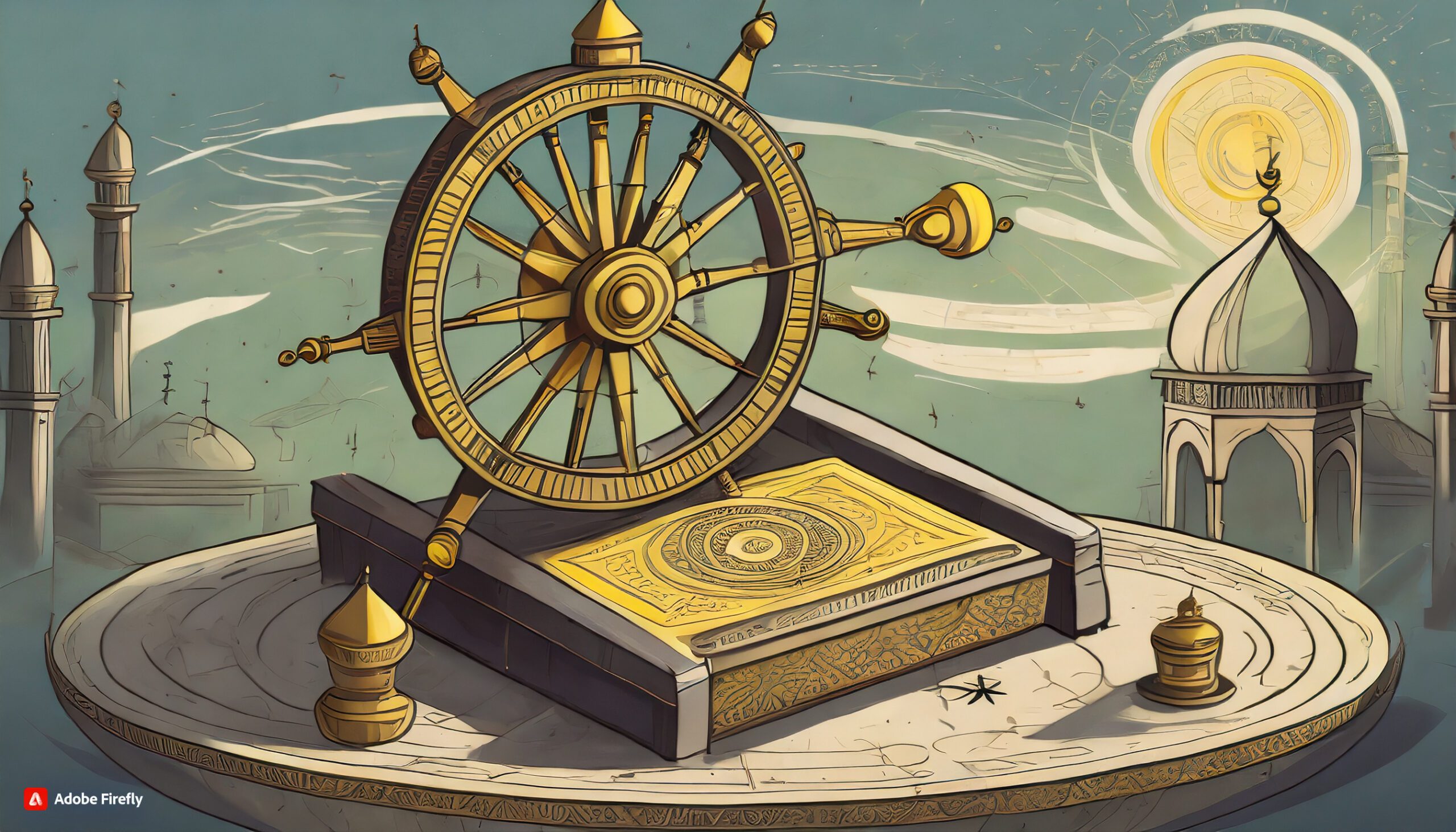

- Ancient Origins: The astrolabe’s invention in the Islamic world was based on earlier Greek and Roman instruments. The word “astrolabe” itself is derived from the Greek word “astrolabos,” meaning “star-taker.”
- Al-Mansur’s Patronage: The Abbasid Caliph al-Mansur (reigned 754-775) played a vital role in fostering scientific innovation. It was under his patronage that the astrolabe was developed and refined.
- Versatile Instrument: The astrolabe was a versatile instrument, serving multiple functions. It could be used for timekeeping, surveying, and most notably, celestial navigation. Sailors and astronomers found it invaluable for determining the positions of celestial objects.
- Early Innovators: While the astrolabe’s invention is often associated with the Islamic world, it had multiple inventors and contributors. Notable names include Al-Fazari, Muhammad al-Fazari, and Jabir ibn Aflah. Each made significant improvements to the design.
- Medieval GPS: The astrolabe was, in many ways, the medieval equivalent of a GPS system. Sailors could use it to determine their latitude and longitude by measuring the angles between celestial objects, such as stars and the sun, and the horizon.
- Wide Adoption: The astrolabe was widely adopted and spread to various parts of the Islamic world, including Spain and North Africa. It was subsequently introduced to Europe, where it had a profound impact on medieval navigation and science.
- Geometric Advancements: The astrolabe’s design involved intricate geometric principles, including stereographic projection, which helped in accurately representing the celestial sphere on a two-dimensional surface.
- Astrolabe Quadrants: Different types of astrolabes were developed, including the mariner’s astrolabe, which was a simplified version used for maritime navigation. These astrolabes typically had a quadrant shape.
- Magnetic Compass Integration: In some astrolabe designs, a magnetic compass was integrated, making it even more useful for navigation at sea. This innovation contributed to more accurate direction finding.
- Surviving Examples: Numerous ancient astrolabes have survived to the present day, and they are highly sought-after artifacts by collectors and historians. Some of the earliest astrolabes still in existence date back to the 8th century.
- Continued Use: While the astrolabe became less essential with the advent of more modern navigation tools, it continued to be used in various forms for centuries. Today, enthusiasts and scholars still use astrolabes to study historical navigation methods and conduct experiments.
The invention of the astrolabe in the Islamic world marked a significant milestone in the development of navigation and astronomy. Its legacy endures as a testament to the scientific and mathematical advancements achieved during the Islamic Golden Age.
The Battle of Talas, leading to the transfer of papermaking technology to the Islamic world
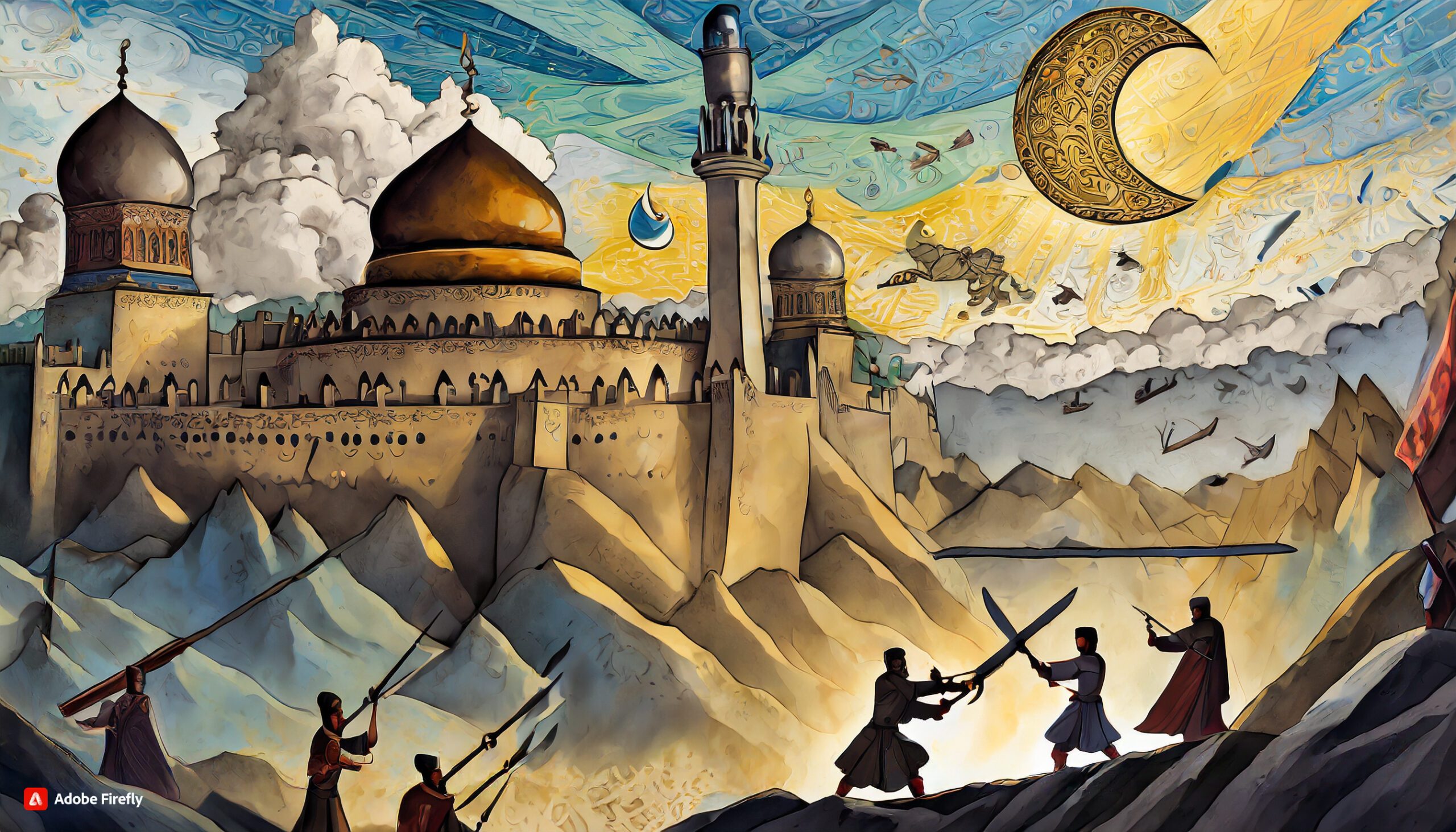

- Tang Dynasty vs. Abbasid Caliphate: The Battle of Talas was fought between the Chinese Tang Dynasty and the Abbasid Caliphate. It took place near the Talas River, which is in present-day Kyrgyzstan.
- Silk Road Connection: The battle occurred in the vicinity of the Silk Road, a major trade route that facilitated the exchange of goods, culture, and technology between the East and the West. This made it a strategic location for both empires.
- Papermaking Technology: One of the most remarkable outcomes of the Battle of Talas was the capture of Chinese prisoners by the Abbasid forces. Among these prisoners were Chinese papermakers who possessed the closely guarded secret of papermaking technology.
- Secretive Knowledge: Papermaking was a closely guarded Chinese secret for centuries. The knowledge of paper production had been a closely held state secret in China, and the capture of these papermakers was a significant event in world history.
- Spread of Papermaking: The captured Chinese papermakers were eventually put to work in Samarkand, a major city in the Abbasid Caliphate. They played a vital role in establishing paper mills and teaching the technology to the local population.
- Impact on Scholarship and Literacy: The transfer of papermaking technology to the Islamic world was a cultural and technological milestone. It led to the widespread availability of paper, which revolutionized not only writing and documentation but also the accessibility of knowledge and the spread of literacy.
- Spread to Europe: From the Islamic world, the knowledge of papermaking eventually spread to Europe through the Muslim-controlled regions of Spain. This marked the beginning of a paper-based culture in medieval Europe, replacing parchment and papyrus.
- Versatility of Paper: Paper was far more affordable and versatile than earlier writing materials, such as parchment and silk. Its adoption contributed to the development of printing technology, including the later invention of the printing press by Johannes Gutenberg.
- Contributions to Islamic Golden Age: The availability of paper and the resulting expansion of libraries, universities, and centers of learning contributed significantly to the Islamic Golden Age. This era saw advances in various fields, including mathematics, science, philosophy, and the preservation of classical knowledge.
- Cultural Exchange: The Battle of Talas and the subsequent transfer of papermaking technology represent how military conflicts could inadvertently lead to the exchange of knowledge and culture between different civilizations.
The Battle of Talas, while not as widely known as some other historical battles, had a profound and lasting impact on the world, particularly through the dissemination of papermaking technology, which transformed the way knowledge was recorded and disseminated across the ages.
Golden age of Islamic culture, including contributions in mathematics, science, and philosophy
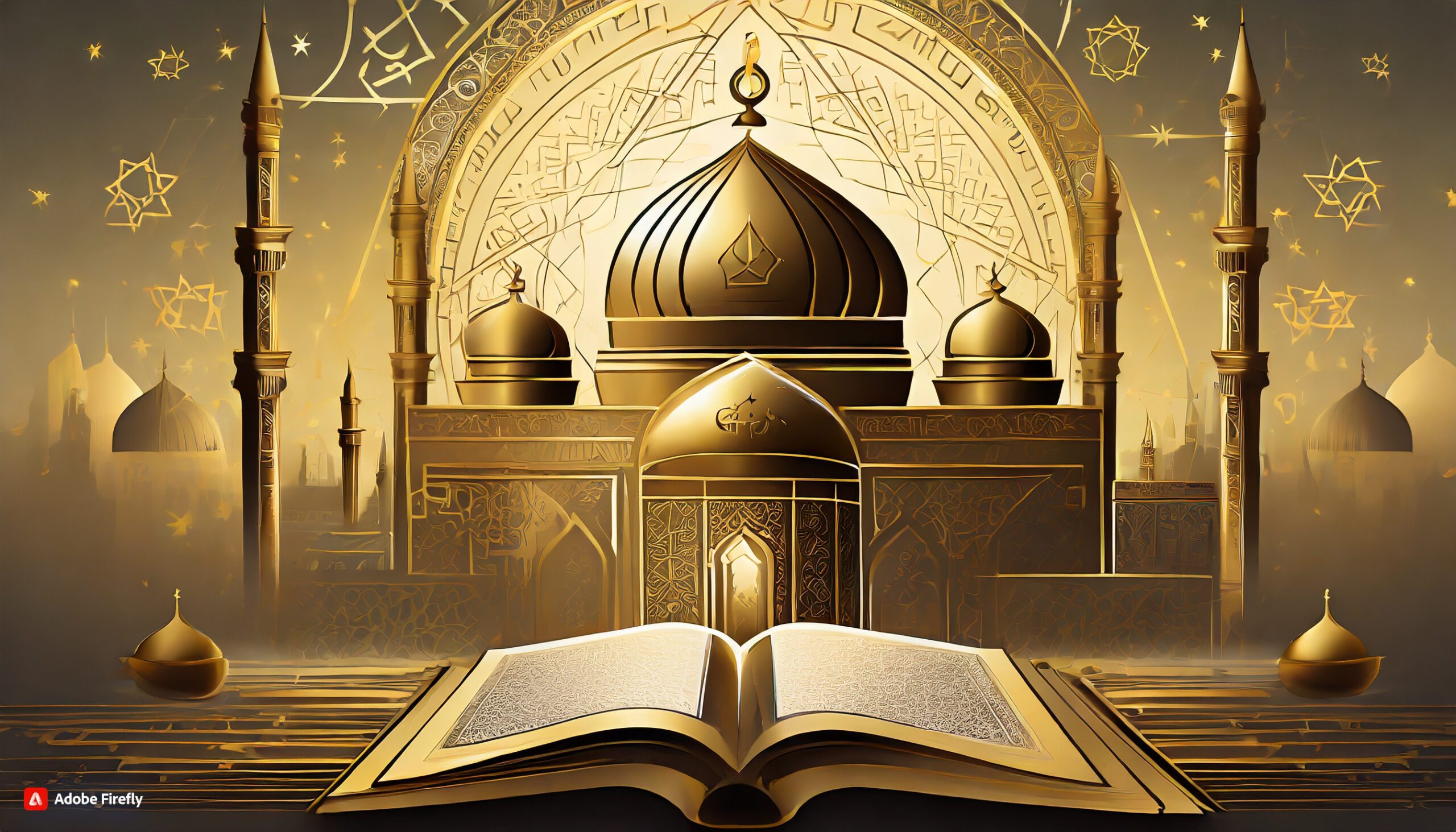

- Diversity of Knowledge: The Islamic Golden Age was a time of remarkable intellectual diversity. Scholars and polymaths from various cultural and religious backgrounds, including Muslims, Christians, Jews, and Persians, all made important contributions.
- House of Wisdom: Caliph Harun al-Rashid and his successors established the House of Wisdom in Baghdad. This academic institution became a hub for scholars, translators, and scribes who worked to collect and translate knowledge from various ancient civilizations, including Greece, India, and Persia.
- Preservation of Classical Texts: Islamic scholars played a critical role in preserving classical Greek and Roman texts that would have otherwise been lost. The translation of these texts into Arabic allowed them to be passed down to future generations.
- Algebra’s Founding: The word “algebra” is derived from the Arabic term “al-jabr,” which is a mathematical treatise written by the Persian scholar Al-Khwarizmi. His work laid the foundation for algebra and algebraic equations.
- Arabic Numerals and Zero: Islamic mathematicians played a pivotal role in introducing the decimal numeral system to the West, including the use of “Arabic numerals.” This system, which included the concept of zero, revolutionized mathematics and facilitated advanced calculations.
- Astronomy and the Astrolabe: Islamic astronomers made substantial advances, including the development of the astrolabe. This instrument allowed for precise observations of the stars and helped determine latitude and time, benefiting both astronomy and navigation.
- Medical Advancements: The works of physicians such as Ibn Sina (Avicenna) and Ibn al-Nafis greatly advanced the field of medicine. Avicenna’s “Canon of Medicine” became a standard medical textbook in Europe and the Islamic world for centuries.
- Philosophical Influence: The works of philosophers like Al-Farabi, Ibn Sina, and Ibn Rushd (Averroes) played a crucial role in preserving and expanding upon Greek and Roman philosophy. Their contributions laid the foundation for the development of Western philosophy during the Middle Ages.
- Scientific Method: Islamic scholars emphasized empirical observation and experimentation in their scientific inquiries, which laid the groundwork for the scientific method later developed in Europe during the Renaissance.
- Astronomical Discoveries: Astronomer Al-Biruni accurately calculated the Earth’s circumference and made significant observations about the solar system. His work was centuries ahead of its time.
- Literary Achievements: The Islamic Golden Age also saw remarkable literary contributions. The “Thousand and One Nights” collection of stories and poetry from this era remains a beloved and influential piece of world literature.
- Ibn Battuta’s Travels: The Muslim scholar and explorer Ibn Battuta traveled extensively, documenting his journeys across Africa, Asia, and Europe. His writings provide invaluable insights into the societies and cultures of the time.
The Golden Age of Islamic culture was a period of extraordinary intellectual and cultural ferment, marked by the preservation and expansion of knowledge from various civilizations, the development of critical mathematical and scientific concepts, and enduring contributions to philosophy and literature. This legacy continues to influence and inspire modern thought and scholarship.
Tibetan Empire’s expansion under Songtsen Gampo


The expansion of the Tibetan Empire under Songtsen Gampo is a fascinating chapter in Tibetan history. Here are some unique facts about this period:
- Buddhism’s Introduction: Songtsen Gampo is credited with introducing Buddhism to Tibet. He married Princess Bhrikuti of Nepal and Princess Wencheng of China, both of whom were Buddhists. Their influence played a pivotal role in the spread of Buddhism in Tibet.
- Marriage Diplomacy: Songtsen Gampo’s strategic marriages with Princess Bhrikuti and Princess Wencheng not only introduced Buddhism but also helped establish important alliances with Nepal and the Tang Dynasty of China.
- Unified Tibet: Songtsen Gampo is known for unifying the various tribes and regions of Tibet into a single, cohesive empire. His reign brought a degree of political stability and centralization to the Tibetan Plateau.
- Military Campaigns: Songtsen Gampo was an ambitious military leader who expanded Tibetan territory through a series of military campaigns. His conquests included parts of China, Nepal, and the Silk Road oases in Central Asia.
- Legacy of Infrastructure: Songtsen Gampo is known for constructing important infrastructure projects, including roads, bridges, and fortresses. These developments facilitated trade, communication, and cultural exchange within the empire.
- Cultural Accomplishments: The Tibetan king’s reign saw the translation of numerous Buddhist scriptures into the Tibetan language, contributing to the preservation and dissemination of Buddhist knowledge.
- Legacy in Architecture: The construction of several Buddhist temples and structures, including the famous Jokhang Temple in Lhasa, is attributed to Songtsen Gampo. These sites remain important religious and cultural landmarks in Tibet.
- Monastery Building: Songtsen Gampo established the Ramoche Temple and is believed to have initiated the construction of the famous Samye Monastery, the first Buddhist monastery in Tibet.
- Golden Statue of Buddha: To commemorate his victory over a hostile tribe, Songtsen Gampo is said to have erected a golden statue of Buddha in Lhasa. This statue became a symbol of his power and devotion to Buddhism.
- Enduring Influence: Songtsen Gampo’s legacy endures in Tibetan culture, particularly in the strong connections between Tibetan Buddhism and the royal dynasty. His introduction of Buddhism and the associated cultural exchanges have left a profound and lasting mark on Tibetan identity.
- Patron of the Arts: The Tibetan king was a patron of the arts and culture, encouraging the development of art, literature, and religious rituals in his empire. His patronage greatly enriched the cultural heritage of Tibet.
Songtsen Gampo’s reign represents a significant period in Tibetan history, marked by territorial expansion, the introduction of Buddhism, and the establishment of cultural and architectural landmarks that continue to shape Tibetan identity and heritage to this day.
Compilation of the Code of Justinian in the Byzantine Empire (c. 870 AD)
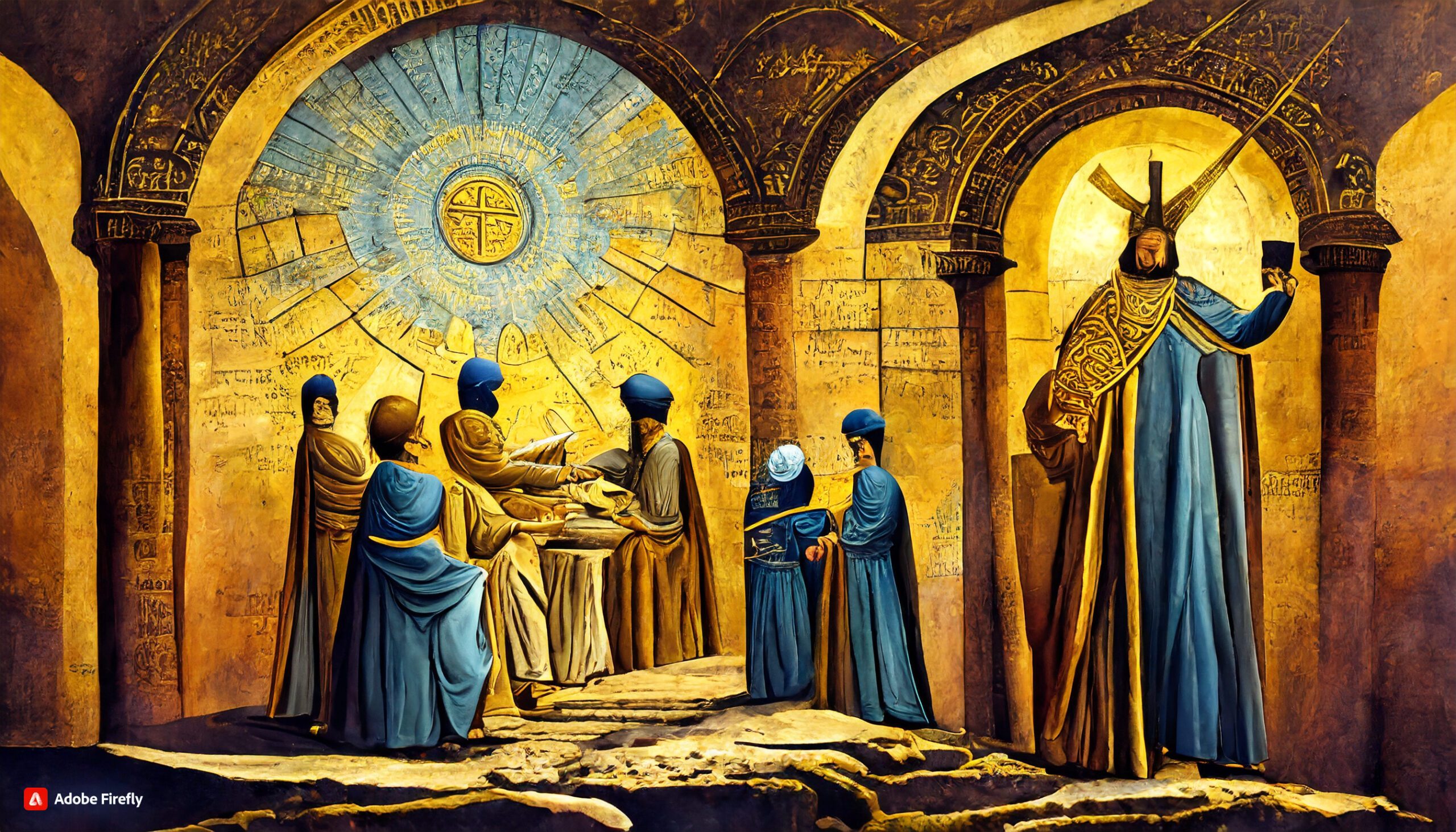

Here are some unique facts about the Compilation of the Code of Justinian:
- Historical Codification: The Code of Justinian is one of the most influential legal codes in history. It represented a systematic codification of Roman law and jurisprudence, ensuring the clarity and consistency of legal principles within the Byzantine Empire.
- Three-Part Structure: The Corpus Juris Civilis consisted of three main components: the Codex Justinianus (a collection of imperial laws), the Digesta (an anthology of legal writings and precedents), and the Institutiones (an introductory textbook on Roman law). These works collectively formed a comprehensive legal system.
- Massive Undertaking: The compilation of the Corpus Juris Civilis was a monumental undertaking. It involved a team of legal experts and scholars who worked diligently to gather, organize, and systematize centuries of Roman legal texts.
- Relevance Beyond the Byzantine Empire: The Code of Justinian had a profound impact on European legal systems. It served as a foundation for civil law systems in many countries, particularly in continental Europe. It greatly influenced the development of the Napoleonic Code, the German Civil Code, and other legal systems.
- Preservation of Roman Legal Tradition: The compilation ensured the preservation of Roman legal traditions during a time when the Western Roman Empire had fallen and knowledge was in danger of being lost. This preservation of Roman law played a crucial role in the continuity of legal principles in Western civilization.
- Standardization of Legal Terminology: Justinian’s legal scholars made significant efforts to standardize legal terminology, which contributed to clarity and consistency in legal interpretation. This had a lasting impact on the development of legal language and terminology.
- Revival of Legal Education: The Corpus Juris Civilis was instrumental in the revival of legal education in the Byzantine Empire and, subsequently, in Europe. It laid the groundwork for the study of law as a distinct academic discipline.
- Byzantine Legal System: The Byzantine Empire continued to rely on the Code of Justinian and its subsequent revisions as the primary legal system for many centuries. It was also supplemented by imperial enactments and legal commentaries.
- Rediscovery in the West: The Corpus Juris Civilis was largely forgotten in Western Europe during the medieval period. It was only rediscovered and studied in depth during the Renaissance, significantly impacting the development of modern legal thought.
- Long-Lasting Influence: The principles and legal concepts established in the Code of Justinian continue to influence legal systems and scholarship around the world, making it one of the most enduring legal legacies in history.
The Compilation of the Code of Justinian is a testament to the enduring importance of Roman law, as it not only preserved Roman legal traditions but also served as a cornerstone for legal systems across Europe and beyond.

